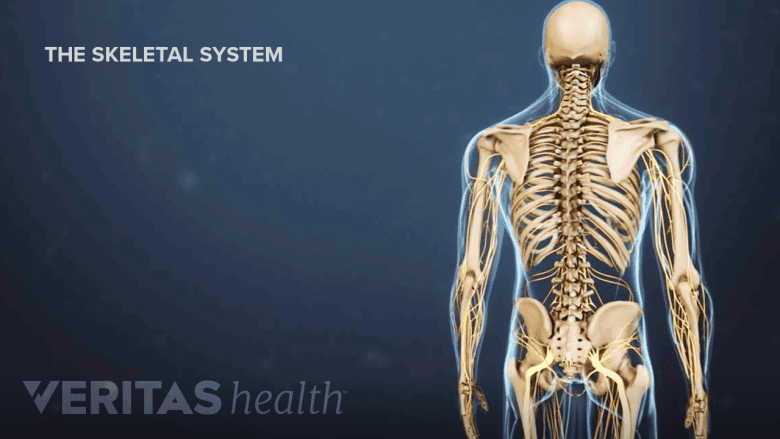Weight decreases when the number of calories burned by the body far exceeds the number of calories consumed, over a long period of time. Nutritional insights can help both ends of the metabolic balance and tip the scales toward significant weight loss.
In This Article:
- Weight Loss for Back Pain Relief
- Weight Loss and Exercise for Patients
- Nutrition and Diet for Weight Loss
6 Ways to Use Food to Burn Fat
Foods that encourage fat cells to release stored energy help maintain a healthy spine.
The best diet plans take advantage of foods known to help convert white adipose tissue (stored fat) into brown adipose tissue (active fat). These foods encourage fat cells to produce heat and release stored energy.
Components of foods that help lose weight include1El Hadi H, Di Vincenzo A, Vettor R, Rossato M. Food Ingredients Involved in White-to-Brown Adipose Tissue Conversion and in Calorie Burning. Front Physiol. 2019;9:1954. Published 2019 Jan 11. doi:10.3389/fphys.2018.01954:
Menthol. Menthol essence can be extracted from peppermint or spearmint or produced in a lab. This compound is often found in foods and drinks that are mint-flavored.
In large amounts, menthol can decrease breastmilk supply.
Curcumin. Turmeric and ginger contain curcumin, which provides a yellow color and flavor to various dishes such as curry. Curcumin is not recommended for individuals with blood clotting disorders, gallstones, kidney stones, or gout.
It is recommended to avoid curcumin supplements, raw turmeric, or raw ginger when pregnant or breastfeeding.
Capsaicin. Varieties of spicy peppers that contain capsaicin include Habanero peppers, jalapeno peppers, serrano peppers, cayenne peppers, and tabasco peppers.
Individuals with gastrointestinal disorders and easily irritable stomachs need to take caution and try small amounts of capsaicin, if any.
Resveratrol. Resveratrol can be found in mulberries, peanuts, pistachios, and red grapes.
These foods and resveratrol supplements are not intended for individuals who have a blood clotting disorder, endometriosis, or uterine fibroids, or certain cancers. It is important to discontinue these foods before surgery.
- Green tea. Green tea contains caffeine and catechins, which work together to reduce fat. One popular commercial variety of green tea is matcha, which has a large number of antioxidants and an enhanced ability to prevent fat absorption.
Omega-3 polyunsaturated fatty acid. Fish oil supplements and fatty fish, such as salmon, mackerel, albacore tuna, and oysters, provide omega-3 polyunsaturated fatty acids.
This compound may interact with medications for blood clotting disorders; in such a case, it is important to consult a physician before taking a supplement.
Many of the above ingredients can be found in foods or as supplements. As with any healthy diet, practicing moderation is key. Fat-burning ingredients are best used on an occasional basis, in small quantities, and only when appropriate.
7 Guidelines for Nutrition and Weight Loss
The combination of a high-calorie, inflammatory diet and insufficient exercise contributes to the widespread overweight and obese conditions of many Americans. Improving nutrition is one way to reduce caloric intake and achieve weight loss in a healthy manner.
Basic recommended guidelines for a healthy diet and nutrition for weight loss include the following:
1. Eat smaller portions
Recent years have seen a rise in serving sizes for foods, up to 12-inch dinner plates, and drinks, up to 20-ounce soda bottles. Packaged items make up a large percentage of the American diet, highlighting the importance of consumer awareness regarding ingredients and portion sizes.
Tools for selecting smaller food portions include:
- Divide foods into appropriate portions when purchasing large quantities or family-size products
- Measure out the food quantities before consuming the food
- Eat at the table, with family and/or friends
- Avoid eating in front of the television, laptop, tablet, phone, or other digital devices
Marketing techniques, such as increased value for money, advertisements that stimulate hunger or thirst, and television, contribute to issues such as mindless eating.2Steenhuis I, Poelman M. Portion Size: Latest Developments and Interventions. Curr Obes Rep. 2017;6(1):10-17. doi:10.1007/s13679-017-0239-x Consumers are driven to eat or drink more than necessary to satisfy their caloric needs. It is important to take control of these external factors; for example, removing digital devices from the vicinity of the dining space may help increase awareness while eating.
2. Reduce the number of calories
Diet is generally understood to serve one purpose: to limit the number of calories consumed. Generally, reducing caloric intake by 500 calories per day (a 500-calorie deficit) can achieve a 1 to 2 pound weight loss per week. When setting goals, keep in mind that it is best to lose only 0.5 to 1 pound a week and to consume at least 1200 calories a day.
Choose nutrient-dense foods in place of empty-calorie foods. Examples of nutrient-dense foods include:
- Vegetables, such as spinach
- Fruits, such as strawberries
- Yogurt, such as nonfat Greek yogurt
- Whole grains, such as brown rice
- Legumes, such as green peas or black beans
- Nuts, such as almonds
- Seeds, such as chia seeds
Empty-calorie foods, on the other hand, offer no nutrients but a lot of calories. Typical examples of empty-calorie foods and drinks include cookies, cakes, donuts, fast food, energy drinks, sodas, alcohol, and ice cream. Lesser-known unhealthy condiments include ketchup, which often lists sugar as the first ingredient, and sour cream, which is high in saturated fat.
3. Track meal composition, portion size, and nutritional content
The nutrition facts on food products will reveal the number of calories, amount of added sugar, salt (sodium) content, amount of saturated fat, and Percent Daily Value of key vitamins and minerals in each serving.
Patients who reduce caloric consumption in their diet slowly but consistently are usually the most successful in maintaining their weight loss. Steady, controlled progress during a diet and weight loss program is generally more effective than sporadic and inconsistent changes in caloric intake and portion sizes.
4. Choose nutritious meals that are lower in fat
While carbohydrates and proteins provide 4 calories per gram, fats provide 9 calories per gram. Calorie count is just one of the several reasons to reduce fat content in the diet. The type of fat is also an important consideration.
- Unsaturated fats are found in foods such as nuts, avocado, olive oil, peanut butter, and salmon. Incorporating these ingredients regularly into the diet for snacks or meals can be healthy even in large quantities.
- Saturated fats are typically found in dairy and meat products. Although they are found in healthy foods, it is advisable to minimize their intake in a weight loss regime.
- Trans fats are among the unhealthiest components of processed snacks, such as margarine; potato chips; and bakery products, such as donuts or cakes. When trying to lose weight, it is advisable to avoid foods containing trans fats.
The right diet contains a healthy portion of unsaturated fats, limited saturated fats, and no trans fats. It is important to be aware that food manufacturers do not need to list trans fats that fall below 0.5 mg per serving; even a small quantity of trans fat can be detrimental to one’s health.
5. Learn methods of food preparation for a healthy diet
The healthiest choices will be prepared without added sugar, salt, or saturated fat. It is best to examine the nutritional facts and list of ingredients, and to choose foods with fewer ingredients. In packaged snacks and foods, ingredients will often list vegetable oil, which refers to any of the several types of oil that are all high in polyunsaturated fatty acids. Preparing food at home may be the best way to ensure that meals are healthy, free of hidden additives.
Delicious fried foods and baked treats can be made using healthy cooking oils, such as:
- Coconut oil
- Olive oil
- Avocado oil
These oils are far better than corn oil, canola oil, or grapeseed oil, all of which are high in polyunsaturated fatty acids. Small changes go a long way; bread can be dipped in extra virgin olive oil for flavor and for antioxidants.
6. Hydrate throughout the day
Water transports nutrients, eliminates waste, and helps metabolize fat. The spinal discs are comprised mostly of water, so staying hydrated is essential for a healthy back.
Naturally, water intake will vary day to day, so it is important to be aware of the minimum water requirement, which is usually calculated by weight. For example, a person who weighs 150 pounds needs a bare minimum of 75 oz of water. On days with greater physical activity and exercise, water intake must be greater than the usual amount.
It is important to note that too much water can be dangerous, because overhydration may lead to problems with the kidney and/or heart,3Hew-Butler T, Smith-Hale V, Pollard-McGrandy A, VanSumeren M. Of Mice and Men-The Physiology, Psychology, and Pathology of Overhydration. Nutrients. 2019;11(7):1539. Published 2019 Jul 7. doi:10.3390/nu11071539 especially for dialysis patients or individuals with existing heart conditions.
7. Identify behavioral and environmental factors
Stress, boredom, sadness, and anger can all have an effect on the quantities and types of food consumed. An individualized diet program takes into account behavioral triggers, such as mood changes, and environmental stimuli, such as smells or stressful situations.
To stay motivated and on track with a weight loss and diet program, individuals can:
- Keep a food diary
- Set a reward for positive behaviors
- Develop a support network of friends and family
- Use additional motivational techniques to maintain steady progress
It may be helpful to observe and record information about behavioral and environmental factors over a period of several days or weeks. Factors that trigger excessive eating or eating of comfort foods may need to be monitored more closely.
When Weight Loss Is Unhealthy
While weight loss with the use of a healthy diet and exercise program may alleviate back pain and improve overall fitness, there are several warning signs that may indicate unhealthy weight loss. If unexplained or unintentional weight loss, loss of appetite, pain, and/or neurological problems are experienced, please consult this article: When Back Pain May Be a Medical Emergency.
If one’s weight has been steady for a long duration of time and then drops unexpectedly, or if appetite is lost, it may be an indication of a serious medical condition.
- 1 El Hadi H, Di Vincenzo A, Vettor R, Rossato M. Food Ingredients Involved in White-to-Brown Adipose Tissue Conversion and in Calorie Burning. Front Physiol. 2019;9:1954. Published 2019 Jan 11. doi:10.3389/fphys.2018.01954
- 2 Steenhuis I, Poelman M. Portion Size: Latest Developments and Interventions. Curr Obes Rep. 2017;6(1):10-17. doi:10.1007/s13679-017-0239-x
- 3 Hew-Butler T, Smith-Hale V, Pollard-McGrandy A, VanSumeren M. Of Mice and Men-The Physiology, Psychology, and Pathology of Overhydration. Nutrients. 2019;11(7):1539. Published 2019 Jul 7. doi:10.3390/nu11071539






